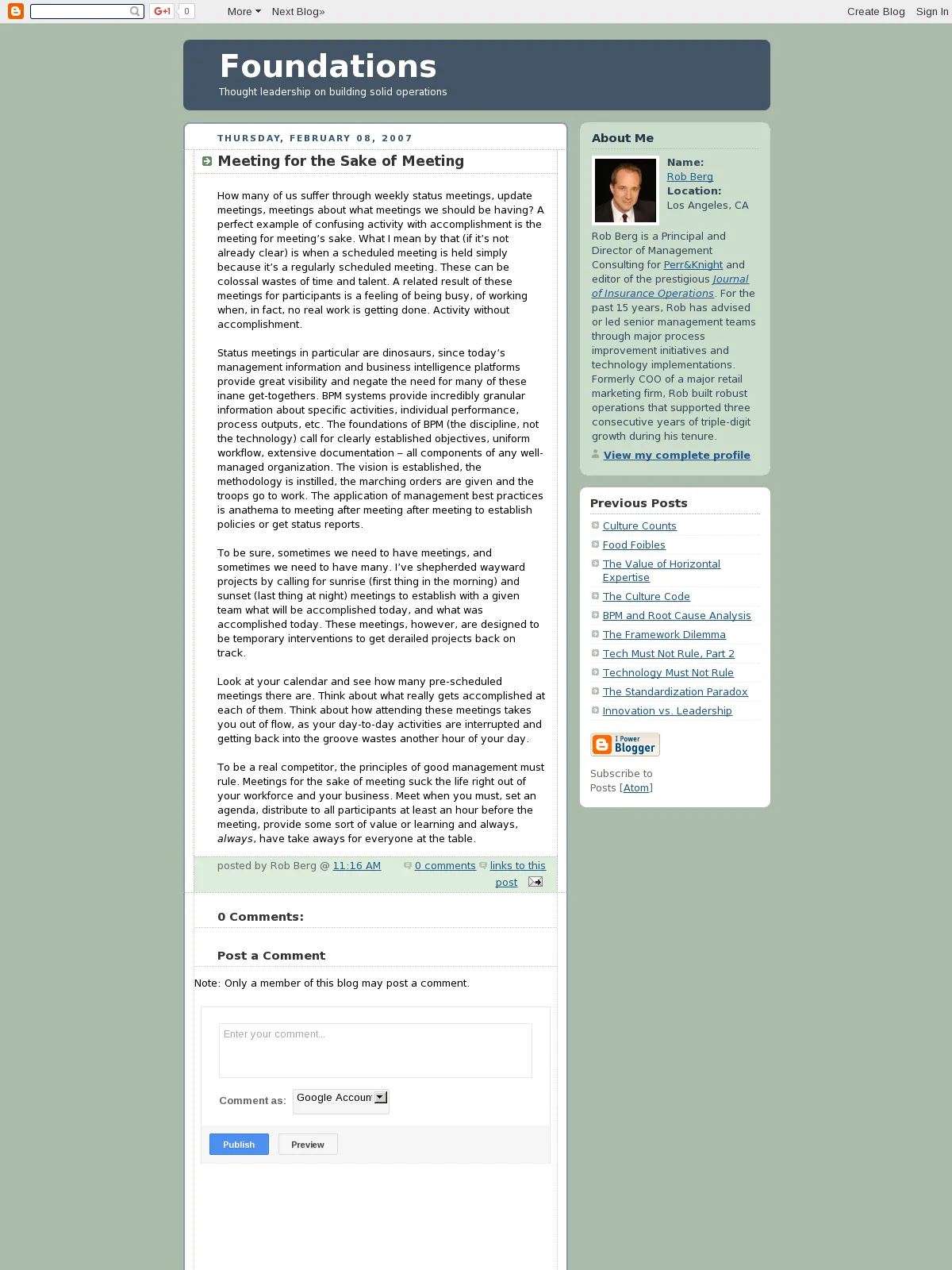Meeting for the Sake of Meeting
Blog: BPM Insights - Rob Berg
How many of us suffer through weekly status meetings, update meetings, meetings about what meetings we should be having? A perfect example of confusing activity with accomplishment is the meeting for meeting’s sake. What I mean by that (if it’s not already clear) is when a scheduled meeting is held simply because it’s a regularly scheduled meeting. These can be colossal wastes of time and talent. A related result of these meetings for participants is a feeling of being busy, of working when, in fact, no real work is getting done. Activity without accomplishment.
Status meetings in particular are dinosaurs, since today’s management information and business intelligence platforms provide great visibility and negate the need for many of these inane get-togethers. BPM systems provide incredibly granular information about specific activities, individual performance, process outputs, etc. The foundations of BPM (the discipline, not the technology) call for clearly established objectives, uniform workflow, extensive documentation – all components of any well-managed organization. The vision is established, the methodology is instilled, the marching orders are given and the troops go to work. The application of management best practices is anathema to meeting after meeting after meeting to establish policies or get status reports.
To be sure, sometimes we need to have meetings, and sometimes we need to have many. I’ve shepherded wayward projects by calling for sunrise (first thing in the morning) and sunset (last thing at night) meetings to establish with a given team what will be accomplished today, and what was accomplished today. These meetings, however, are designed to be temporary interventions to get derailed projects back on track.
Look at your calendar and see how many pre-scheduled meetings there are. Think about what really gets accomplished at each of them. Think about how attending these meetings takes you out of flow, as your day-to-day activities are interrupted and getting back into the groove wastes another hour of your day.
To be a real competitor, the principles of good management must rule. Meetings for the sake of meeting suck the life right out of your workforce and your business. Meet when you must, set an agenda, distribute to all participants at least an hour before the meeting, provide some sort of value or learning and always, always, have take aways for everyone at the table.
Status meetings in particular are dinosaurs, since today’s management information and business intelligence platforms provide great visibility and negate the need for many of these inane get-togethers. BPM systems provide incredibly granular information about specific activities, individual performance, process outputs, etc. The foundations of BPM (the discipline, not the technology) call for clearly established objectives, uniform workflow, extensive documentation – all components of any well-managed organization. The vision is established, the methodology is instilled, the marching orders are given and the troops go to work. The application of management best practices is anathema to meeting after meeting after meeting to establish policies or get status reports.
To be sure, sometimes we need to have meetings, and sometimes we need to have many. I’ve shepherded wayward projects by calling for sunrise (first thing in the morning) and sunset (last thing at night) meetings to establish with a given team what will be accomplished today, and what was accomplished today. These meetings, however, are designed to be temporary interventions to get derailed projects back on track.
Look at your calendar and see how many pre-scheduled meetings there are. Think about what really gets accomplished at each of them. Think about how attending these meetings takes you out of flow, as your day-to-day activities are interrupted and getting back into the groove wastes another hour of your day.
To be a real competitor, the principles of good management must rule. Meetings for the sake of meeting suck the life right out of your workforce and your business. Meet when you must, set an agenda, distribute to all participants at least an hour before the meeting, provide some sort of value or learning and always, always, have take aways for everyone at the table.
